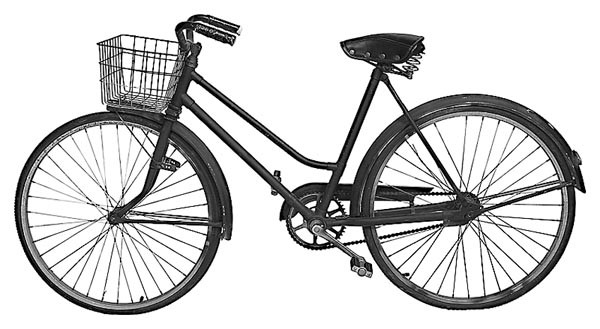It's a hazy morning. The Monongahela, still and calm, reflects the low brown-and-green hillsides surrounding it.
Bob Gangewere and I stand with our bicycles at the Pump House, at the eastern edge of Homestead's Waterfront. A memorial marks this as the place where, on July 6, 1892, a union-Pinkerton skirmish transformed the Homestead Steel Strike into one of the bloodiest moments in American labor history.
An avid bicycle enthusiast wearing a red shirt and tan Ligonier Railroad baseball cap, Gangewere is a spry septuagenarian, a pedal-pushing 75-year-old who looks and acts a quarter-century younger. He's also been an integral part of Friends of the Riverfront, which pioneered the creation of the region's trail network. The text he wrote for that network's three dozen trail signs — detailing flora and fauna, history and highlights — mark him as the chronicler of this growing attraction.
Longtime friends, he and I have ridden these trails for decades now: Allegheny River, Eliza Furnace, Upper St. Clair, and so on. Today, we're pedaling out of Homestead, through Duquesne, down to McKeesport ... former mill sites all, a five-mile stretch encompassing Pittsburgh's brawny industrial past and present.
"It's a wonderful ride," Gangewere says, "in an industrial way."
I nestle my hat a little farther onto my head, tuck my chain-side trouser leg into my thick white sock, and push off. Looking across the river, we see the husk of Carrie Furnace. Built in 1884, the complex ran for 98 years, at its peak producing 1,250 tons of iron daily. Now the plan is to transform the little that's left into a museum, with a bike link across the rusting adjacent bridge.
"It's a long way off," Gangewere sighs.
A bit farther, we stop under the green span of the Rankin Bridge for a shaded look at the historic Edgar Thomson Works across the river. It's been operating for 140 years. Andrew Carnegie named it for the Pennsylvania Railroad president — a typical piece of Carnegie flattery, designed to get the steelmaking contract for an endless number of PARR rails, bridges and buildings. When the ploy worked, Carnegie's cut of the take was incalculable.
A Norfolk Southern train screeches by, its open black hoppers piled high with coal. A second train follows in its wake, flat cars carrying piggybacked containers bound for Philadelphia and Newark, there to venture out on the open sea.
The trail climbs and we ride up a composite incline to a new COR-TEN steel bridge crossing above the railroad. Erected in 2010, it helped complete the trail as it jogs back and forth between rights-of-way.
At the mill, docked coal barges are unloaded by yellow and brown front hoes. Scuttling back and forth like giant birds, they load dump trucks, which drive to the mill's burning maw.
Riding again, we steer around a rock landslide, a gift of winter freezes and spring rains. To our right, up a hill, we see the back end of Kennywood, the Thunderbolt's white wooden superstructure marching down the hillside, framing the brawny tubular steel of the Phantom's Revenge.
"The sheer motion of it all," Gangewere gestures: "Trucks across bridges, trains along the water, barges unloading coal. It all forms an unparalleled panorama of modern transport."
In the railyard below are as many as 20,000 30-foot pipes, eight football fields' worth. All are sheathed in green protective sleeves — and headed, we suppose, for the Marcellus Shale fields. "Where else in this day and age?" Gangewere asks.
Passing by Duquesne, with its retrofitted Dorothy 6 site awaiting light-industrial tenants, we see how the seasons have eaten at cracked, moss-streaked concrete walls designed to keep the curious out. Or the millhands in.
We cross the Riverton Bridge. Once dedicated to steel-laden trains, it now provides trail access to McKeesport. We stop there, high above the river, gazing down on the site of the former National Tube works. In its prime, National Tube employed 10,000 steelworkers. Like Duquesne, its sheds and warehouses now wait for new tenants.
The trail bends around to the Youghiogheny River beyond, but the sun is high and duty calls elsewhere. "Let's wend our way back," Gangewere says, and we turn our bikes around.
As we ride, Gangewere considers what we've seen. "All is not lost," he says. "The loss of jobs and industries and a way of life was devastating. But that's been replaced by a more inviting, more open, more natural lifestyle. That's to the good.
"My own part has been to give something to the public," he adds. "That's very valuable to me."



















